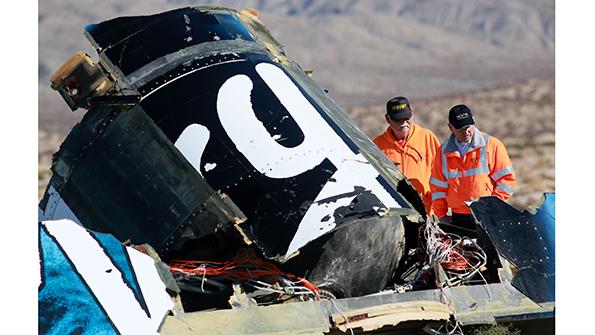Opinion: Commercial Space Travel Needs The NTSB

We have all marveled at the private commercial space launches in recent years featuring ordinary citizens transported to the edge of space, some as guests and some as paying customers. So far, all have returned safely.
But as private launches become more common, and the vehicles become larger, the possibility of accidents increases. As NASA states, “Space travel is hard and unforgiving.” The question we need to answer is, if tragedy strikes, whom do we trust to provide an unbiased and knowledgeable investigation that will minimize the possibility of reoccurrences?
It must be an agency that has no financial or regulatory interest in the flight, yet has the technical expertise, the commitment to excellence and the credibility that comes from independence to find out what happened and how to make sure it doesn’t happen again. There is only one U.S. agency that fits the bill — the National Transportation Safety Board (NTSB).
For almost 60 years, the NTSB has investigated accidents and incidents in all modes of transportation, determined the causes and made recommendations to address the problems it found. It has become the world’s gold standard for accident investigation. NTSB transparency helps the public know that safeguards are working and that NTSB conclusions are based upon the facts and evidence from its investigation and not from undue influence. The list of safety improvements resulting from this body of work is too numerous to recount here, but it is safe to say that tens of thousands of lives have been saved by independent NTSB investigations.
Why should commercial space travel be any different?
The NTSB recently proposed a rulemaking that unambiguously establishes its authority to assume leadership following certain commercial space flight mishaps. Predictably, most major players in the industry have objected, stating in essence that they can best assess causes of their own accidents. But history has shown that no private company or government agency should investigate itself. Congress realized that in 1974 when it removed the NTSB from the Transportation Department, agencies of which the NTSB investigates as a matter of routine. If, for example, the FAA, or even worse the company itself, is given authority to investigate commercial space accidents, they will be assessing their own role in the accident.
The board has used its independence to stand up in the face of defensiveness by regulators and transportation companies.
■ When a Boeing 767 crashed in Thailand, the NTSB said an inadvertent in-flight deployment of an engine thrust reverser was the cause. Boeing and the FAA initially called that impossible; the NTSB was proved right.
■ When a Boeing 747 broke apart 10 min. after takeoff from New York’s John F. Kennedy International Airport, the board found an electrical short resulted in an explosion of the near-empty center wing fuel tank. Boeing initially asserted that it couldn’t happen, and even if the tank exploded, it wouldn’t have resulted in the destruction of the aircraft. The NTSB was proved right.
This independent view can work both ways. For example, after an EgyptAir 767 crashed into the Atlantic Ocean, the airline insisted the aircraft had fatally flawed control components, but the board found that the pilot had purposely crashed the airliner in an act of suicide. Similarly, when an Airbus A300 crashed in New York minutes after takeoff following the separation of its vertical stabilizer, many assumed that the aircraft’s composite design was to
blame. But the NTSB found that, in fact, the stabilizer performed well beyond its design limit before failing, which happened because of the pilot’s excessive rudder inputs.
NASA likes to use the term “participants” rather than “passengers” when talking about non-astronauts on space flights. Perhaps this makes the flights appear experimental; however, these flights are billed as space tourism, and some have paid to board them. The flights are commercial.
Even if flights are considered experimental, the board has proved its worth in this arena too. In 2018, the NTSB investigated a case where an automated test vehicle struck and killed a pedestrian in Arizona. As a result of the board’s early involvement, it made safety recommendations that have guided regulators and all automated vehicle developers ever since.
All will benefit from the NTSB’s leadership of commercial space transportation accidents. Recently introduced bipartisan legislation that would clarify and strengthen the board’s authority should promptly be passed into law. In this way, the public will get factual accounts of the circumstances of the accidents and have faith in the results of the board’s transparent investigations. Commercial space service will best be served by having the same dual safety construct — a regulatory authority and a separate independent investigating authority — that has served commercial aviation, and the American public, so well.
Jim Hall, Chris Hart, Deb Hersman and Robert Sumwalt are all former chairmen of the National Transportation Safety Board.





Comments
They can definitely develop these capabilities and I would think having them in an observing capacity would be helpful, but giving them their traditional authority and responsibility for investigating and finding "root cause" of spaceship accidents at this time is premature.
In fact I believe that current FAA mandate on Space Transportation (i.e. launch licenses) will be better served if they are transferred to NASA.